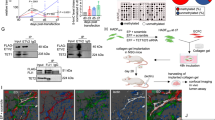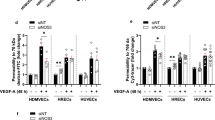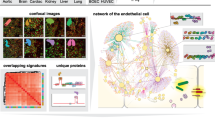Abstract
Background:
Virus-associated acute encephalopathy (VAE) is a severe central nervous system complication caused by common viral infections in children. The pathophysiology of VAE is thought to be endothelial injury. This study was designed to establish an in vitro VAE model for evaluating endothelial injury caused by the proinflammatory cytokine TNF-α.
Methods:
Transwell-grown human umbilical vein endothelial cells (HUVECs) monolayers were incubated with serially diluted TNF-α. Transendothelial electrical resistance (TER) was measured using impedance spectroscopy. Permeability changes of HUVECs after TNF-α treatment were determined by fluorescein isothiocyanate (FITC)-conjugated dextran. Moreover, TNF-α-induced morphological changes in claudin-5 and apoptosis were observed by immunofluorescent staining.
Results:
The decrease in TER, time of TER recovery to baseline, and increase in permeability were all dependent on TNF-α concentration. Immunofluorescent staining showed that claudin-5 was delocalized after TNF-α treatment in a dose-dependent manner. In addition, some apoptotic cells were observed at high TNF-α concentrations.
Conclusion:
TER measurement combined with a permeability assay could be useful for evaluating vascular endothelial cell permeability in an in vitro model. These evaluation methods will contribute to both the development of specific treatments focusing on vascular permeability, and the search for a novel therapeutic strategy in VAE treatment.
Similar content being viewed by others
Log in or create a free account to read this content
Gain free access to this article, as well as selected content from this journal and more on nature.com
or
References
Mizuguchi M, Yamanouchi H, Ichiyama T, Shiomi M. Acute encephalopathy associated with influenza and other viral infections. Acta Neurol Scand Suppl 2007;186:45–56.
Goenka A, Michael BD, Ledger E, et al. Neurological manifestations of influenza infection in children and adults: results of a National British Surveillance Study. Clin Infect Dis 2014;58:775–84.
Ichiyama T, Nishikawa M, Yoshitomi T, Hayashi T, Furukawa S. Tumor necrosis factor-alpha, interleukin-1 beta, and interleukin-6 in cerebrospinal fluid from children with prolonged febrile seizures. Comparison with acute encephalitis/encephalopathy. Neurology 1998;50:407–11.
Ichiyama T, Isumi H, Ozawa H, Matsubara T, Morishima T, Furukawa S. Cerebrospinal fluid and serum levels of cytokines and soluble tumor necrosis factor receptor in influenza virus-associated encephalopathy. Scand J Infect Dis 2003;35:59–61.
Morita H, Hosoya M, Kato A, Kawasaki Y, Suzuki H. Laboratory characteristics of acute encephalopathy with multiple organ dysfunctions. Brain Dev 2005;27:477–82.
Togashi T, Matsuzono Y, Takeyoshi Y, Nagano N. Pathological findings of two patients with influenza-associated encephalopathy who died with a rapid fulminant course. 2002; J Jpn Pediatr Soc 106:76–80.
Hoshino A, Saitoh M, Oka A, et al. Epidemiology of acute encephalopathy in Japan, with emphasis on the association of viruses and syndromes. Brain Dev 2012;34:337–43.
Kasai T, Togashi T, Morishima T. Encephalopathy associated with influenza epidemics. Lancet 2000;355:1558–9.
Hu YJ, Wang YD, Tan FQ, Yang WX. Regulation of paracellular permeability: factors and mechanisms. Mol Biol Rep 2013;40:6123–42.
Capaldo CT, Nusrat A. Cytokine regulation of tight junctions. Biochim Biophys Acta 2009;1788:864–71.
Chiba H, Osanai M, Murata M, Kojima T, Sawada N. Transmembrane proteins of tight junctions. Biochim Biophys Acta 2008;1778:588–600.
Morita K, Furuse M, Fujimoto K, Tsukita S. Claudin multigene family encoding four-transmembrane domain protein components of tight junction strands. Proc Natl Acad Sci USA 1999;96:511–6.
Morita K, Sasaki H, Furuse M, Tsukita S. Endothelial claudin: claudin-5/TMVCF constitutes tight junction strands in endothelial cells. J Cell Biol 1999;147:185–94.
Nitta T, Hata M, Gotoh S, et al. Size-selective loosening of the blood-brain barrier in claudin-5-deficient mice. J Cell Biol 2003;161:653–60.
Bressler J, Clark K, O’Driscoll C. Assessing blood-brain barrier function using in vitro assays. Methods Mol Biol 2013;1066:67–79.
Karasaki Y. [Isolation of endothelial cells from human umbilical cords and development of low-cost culture medium]. J UOEH 1996;18:281–5.
Jaffe EA, Nachman RL, Becker CG, Minick CR. Culture of human endothelial cells derived from umbilical veins. Identification by morphologic and immunologic criteria. J Clin Invest 1973;52:2745–56.
Eigenmann DE, Xue G, Kim KS, Moses AV, Hamburger M, Oufir M. Comparative study of four immortalized human brain capillary endothelial cell lines, hCMEC/D3, hBMEC, TY10, and BB19, and optimization of culture conditions, for an in vitro blood-brain barrier model for drug permeability studies. Fluids Barriers CNS 2013;10:33.
Horiuchi T, Matsunaga K, Banno M, et al. HPMCs induce greater intercellular delocalization of tight junction-associated proteins due to a higher susceptibility to H2O2 compared with HUVECs. Perit Dial Int 2009;29:217–26.
Beese M, Wyss K, Haubitz M, Kirsch T. Effect of cAMP derivates on assembly and maintenance of tight junctions in human umbilical vein endothelial cells. BMC Cell Biol 2010;11:68.
Robaye B, Mosselmans R, Fiers W, Dumont JE, Galand P. Tumor necrosis factor induces apoptosis (programmed cell death) in normal endothelial cells in vitro. Am J Pathol 1991;138:447–53.
Fan Y, Dutta J, Gupta N, Fan G, Gélinas C. Regulation of programmed cell death by NF-kappaB and its role in tumorigenesis and therapy. Adv Exp Med Biol 2008;615:223–50.
McKenzie JA, Ridley AJ. Roles of Rho/ROCK and MLCK in TNF-alpha-induced changes in endothelial morphology and permeability. J Cell Physiol 2007;213:221–8.
Ma TY, Iwamoto GK, Hoa NT, et al. TNF-alpha-induced increase in intestinal epithelial tight junction permeability requires NF-kappa B activation. Am J Physiol Gastrointest Liver Physiol 2004;286:G367–76.
Aslam M, Ahmad N, Srivastava R, Hemmer B. TNF-alpha induced NFκB signaling and p65 (RelA) overexpression repress Cldn5 promoter in mouse brain endothelial cells. Cytokine 2012;57:269–75.
Utech M, Mennigen R, Bruewer M. Endocytosis and recycling of tight junction proteins in inflammation. J Biomed Biotechnol 2010;2010:484987.
Stamatovic SM, Keep RF, Wang MM, Jankovic I, Andjelkovic AV. Caveolae-mediated internalization of occludin and claudin-5 during CCL2-induced tight junction remodeling in brain endothelial cells. J Biol Chem 2009;284:19053–66.
Hosoya M, Kawasaki Y, Katayose M, et al. Prognostic predictive values of serum cytochrome c, cytokines, and other laboratory measurements in acute encephalopathy with multiple organ failure. Arch Dis Child 2006;91:469–72.
Nunoi H, Mercado MR, Mizukami T, et al. Apoptosis under hypercytokinemia is a possible pathogenesis in influenza-associated encephalopathy. Pediatr Int 2005;47:175–9.
Hosoya M, Nunoi H, Aoyama M, Kawasaki Y, Suzuki H. Cytochrome c and tumor necrosis factor-alpha values in serum and cerebrospinal fluid of patients with influenza-associated encephalopathy. Pediatr Infect Dis J 2005;24:467–70.
Sumikoshi M, Hashimoto K, Kawasaki Y, et al. Human influenza virus infection and apoptosis induction in human vascular endothelial cells. J Med Virol 2008;80:1072–8.
Koshio O, Nagao T, Mabuchi A, Ono Y, Suzuki K. Apoptotic signaling in endothelial cells with neutrophil activation. Mol Cell Biochem 2012;363:269–80.
Mi J, Zhang X, Liu Y, et al. NF-kappaB inhibition by an adenovirus expressed aptamer sensitizes TNFalpha-induced apoptosis. Biochem Biophys Res Commun 2007;359:475–80.
Beutler BA, Milsark IW, Cerami A. Cachectin/tumor necrosis factor: production, distribution, and metabolic fate in vivo. J Immunol 1985;135:3972–7.
Goldblum SE, Hennig B, Jay M, Yoneda K, McClain CJ. Tumor necrosis factor alpha-induced pulmonary vascular endothelial injury. Infect Immun 1989;57:1218–26.
Yilmaz A, Bieler G, Spertini O, Lejeune FJ, Rüegg C. Pulse treatment of human vascular endothelial cells with high doses of tumor necrosis factor and interferon-gamma results in simultaneous synergistic and reversible effects on proliferation and morphology. Int J Cancer 1998;77:592–9.
Honda M, Nakagawa S, Hayashi K, et al. Adrenomedullin improves the blood-brain barrier function through the expression of claudin-5. Cell Mol Neurobiol 2006;26:109–18.
Hemmersbach S, Brauer SS, Hüwel S, Galla HJ, Humpf HU. Transepithelial permeability studies of flavan-3-ol-C-glucosides and procyanidin dimers and trimers across the Caco-2 cell monolayer. J Agric Food Chem 2013;61:7932–40.
Benson K, Cramer S, Galla HJ. Impedance-based cell monitoring: barrier properties and beyond. Fluids Barriers CNS 2013;10:5.
Dalkara T, Gursoy-Ozdemir Y, Yemisci M. Brain microvascular pericytes in health and disease. Acta Neuropathol 2011;122:1–9.
Acknowledgements
The authors would like to thank the lab technical staff Ken Honzumi, Toshiko Sato, and Mieko Tanji for their excellent technical skills, as well as the neonatologists and obstetricians of Fukushima Medical University for the obtaining of umbilical cords. The authors are also very grateful to the mothers who donated their umbilical cords.
Author information
Authors and Affiliations
Corresponding author
Rights and permissions
About this article
Cite this article
Miyazaki, K., Hashimoto, K., Sato, M. et al. Establishment of a method for evaluating endothelial cell injury by TNF-α in vitro for clarifying the pathophysiology of virus-associated acute encephalopathy. Pediatr Res 81, 942–947 (2017). https://doi.org/10.1038/pr.2017.28
Received:
Accepted:
Published:
Issue date:
DOI: https://doi.org/10.1038/pr.2017.28
This article is cited by
-
Schizophrenia endothelial cells exhibit higher permeability and altered angiogenesis patterns in patient-derived organoids
Translational Psychiatry (2024)
-
S-1-propenylcysteine improves TNF-α-induced vascular endothelial barrier dysfunction by suppressing the GEF-H1/RhoA/Rac pathway
Cell Communication and Signaling (2021)
-
Effect of docosahexaenoic acid plus insulin on atherosclerotic human endothelial cells
Journal of Inflammation (2021)
-
Towards the development of a human in vitro model of the blood–brain barrier for virus-associated acute encephalopathy: assessment of the time- and concentration-dependent effects of TNF-α on paracellular tightness
Experimental Brain Research (2021)
-
S100A9-containing serum exosomes of burn injury patients promote permeability of pulmonary microvascular endothelial cells
Journal of Biosciences (2021)



